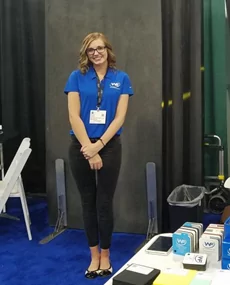While pressure sensitive adhesive (PSA) tapes are ideal for bonding to a variety of materials (including foam, rubber, painted and standard metal finishes, a range of plastics, and other low surface energy substrates), the options may seem unlimited. How can you choose the right solutions for you or your customer’s end-use? To help converters select the right adhesive for a specific application, we have developed a product selection tool, with four simple steps, so you can find the exact tape solution you need. These steps include:
- Lamination: What are you laminating to?
- Surface Energy: What surfaces are you sticking to?
- End-Use Requirements: What are your application requirements?
- Tape Construction: What tape construction do you need?
Step 1 – Lamination:
What Are You Laminating To? Is your adhesive for foam? Felt? Fabric? Film? Foil? Whichever your materials, we break it down into three categories:
- Foams, including polyether urethane, polyester urethane, dense urethane, sponge rubber foam, and silicone sponge foam
- Nonwovens, felts and fabrics
- Films and foils
Knowing how well adhesives laminate to various materials can help you determine the best combination. Specific adhesives work better with specific materials. For example, general purpose rubber adhesives work very well with polyester urethane, dense urethane and sponge rubber foams used to make things like phase converter mats which reduce vibration. However, while an adhesive like the High-Performance Acrylic (HPA™) is not suited for those foams, it performs well with felts and fabrics.
Worldwide Foam Offers PSA lamination as one of our add-on services. Learn more about it here.
Step 2 – Surface Energy:
What surfaces are you bonding to? Surface energy—a measurement of a surface that indicates how something will bond to it—affects an adhesive’s ability to bond to that substrate. Using the wrong adhesive on the wrong surface will not produce an effective bond. It is so important your adhesive works with the surface it is being adhered to. With this in mind, we look at four different surface energy types and their corresponding materials:
- High: Aluminum, Stainless Steel, Copper, Glass, Polyimide (Kapton®), Nylon, Polyester (PET) Film, Polyurethane Film
- Medium: ABS, Polycarbonate, Vinyl (PVC), Acrylic, Polystyrene
- Low: EVA, Powder Coated Paint, Polyethylene, Polypropylene, PVF
- Extra-low: PTFE (Teflon™), Silicone Converters should always ask their customers what the construction will be adhered to before selecting an appropriate adhesive.
Step 3 – End-Use Requirements:
What are your application requirements? A tape construction may face a variety of situations during its lifecycle. And each situation faces unique challenges, depending on the end-use. For example, a tape construction that will live under the hood of a car may be exposed to fuel, chemicals, and extreme temperatures. This tape has very different end-use requirements than a construction used in the manufacture of exterior building materials that are exposed to UV light.
Before choosing an adhesive, consider the following traits. Ask yourself, are any of these requirements needed for your application?
- Maximum service temperature
- Humidity resistance
- Solvent/chemical resistance
- UV resistance
- Shear strength
- Initial tack
- Price
Step 4 – Tape Construction:
What tape construction do you need? Choosing the right construction, along with the optimal adhesives, can help a tape’s convertibility and performance. There are three constructions to consider:
- Transfer Tape – Single Liner/Double Liner
- Single Coated Tape
- Double Coated Tape/Differential
For example, an application may involve bonding to foam that is going to be die-cut. There is a risk the foam will stretch and lose its desired shape when it is applied to its end-use substrate. So, in this case, the converter should consider using a double-coated tape. The carrier will add dimensional stability that will help retain its shape. When choosing a construction, it is also important to consider the liner. There are five liner types we look at, each with its own attributes:
- Paper/Kraft (SCK)
- Poly Coated Kraft (PCK)
- 12 Pt. Board
- Polypropylene (PP)
- Polyester (PET)
Paper/Kraft is one of the most popular, as it is affordable and suitable for a variety of applications. A 12 Pt. Board liner can offer rigidity that is useful for small, hand-applied parts. Polypropylene offers high tear resistance and polyester film helps improve the convertibility of small parts.
 Contact Us For More PSA Information
Contact Us For More PSA Information
Our expanded PSA offering includes multiple products designed to perform in a wide array of bonding applications. Customers have the option to order adhesive applied to foam sheets or continuous rolls. We can also convert adhesive rolls to custom widths and lengths at our Elkhart, IN facility.
Similar Article:


